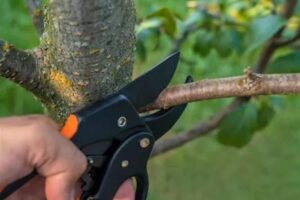
Gutter guards keep leaves, pine needles, branches, and other debris from accumulating and clogging your gutter system.
Many options exist, from plastics to metals like aluminum, stainless steel, and uPVC. Each offers pros and cons to balance budget, performance, and longevity. Ultimately, the best gutter guards are made of micro mesh to allow proper drainage while keeping your gutters unclogged.
Material
Gutters are crucial in channeling rainwater away from roofs, walls, and foundations, preventing potential flooding, damage, landscape erosion, and mold growth. However, gutters require periodic cleaning and maintenance to function correctly. Gutter guards reduce the frequency of cleaning and help your home stay cleaner longer.
Gutter guards Gresham are available in various materials, from foam to stainless steel, offering different benefits. For example, plastics are inexpensive and durable, while stainless steel is corrosion-resistant. The type and material you choose depends on your budget and maintenance willingness, such as whether you prefer a “set it and forget it” option or a more hands-on approach.
Brush-style gutter guards are oversized pipe cleaners that rest inside your gutter, preventing large debris from falling into and clogging your gutter system.
Aesthetics
Gutter guards are designed to prevent clogs, saving homeowners the hassle and expense of gutter cleaning and home damage. However, there are many different designs and materials, so finding a style that complements your house and fits your aesthetic preferences is essential.
Brush gutter guards look like large pipe cleaners in the trough of the gutter and work by catching debris rather than allowing it to flow out of the gutter. They need to be removed for cleaning more frequently than other styles and may not hold up under harsh weather conditions.
Micro-mesh gutter guards offer a more visually appealing alternative to brushes and foam. They feature a metal mesh with hundreds of tiny holes that direct water into the gutters while keeping debris out. They blend in with the surroundings and can be color-matched to your home for a more streamlined appearance. These types of guards can be pricey, but are known to last longer than other options.
Installation
Homeowners can install gutter guards themselves with the proper skills and tools. Reading the manufacturer’s instructions is the first step to ensure they understand how the device works and how to install it. DIY brands also host video tutorials and customer reviews to help homeowners avoid common mistakes. Then, homeowners should gather the necessary tools and supplies for the project, including a ladder, gloves, a toolbelt, a screwdriver, a hammer, and a tape measure. If a homeowner uses a gutter guard that requires cutting, they should also consider purchasing a circular saw or renting one for the job.
Most gutter guards come in 4- to 6-ft (1.2- 1.8 m) sections that snap together. This allows homeowners to work on smaller roof areas at a time and keep their hands free from debris. This method is safer than ascending a ladder with tools in your hands and can lower the chance of slipping off the roof during installation.
Warranty
Choosing the right gutter guards can reduce the need for cleaning gutters several times yearly and may also prevent costly home repairs due to clogged gutters. These repairs include roof damage, rotting fascia and wood, and basement flooding.
Gutter guards can also safeguard your home from fire threats by preventing flammable items from accumulating in the gutters. This is especially important during wildfires and droughts when winds carry dry, combustible debris to your house.
Choosing the proper gutter guards for your home will come down to price, installation process, and performance. While many homeowners can install some types of gutter guards themselves, professional installations offer higher quality products and long-lasting warranties. In addition, professionals are trained in ladder safety and have the tools and experience to ensure a seamless installation. This is especially important if you live in a region with harsh weather conditions and frequent tree debris, like pine needles or pollen.






